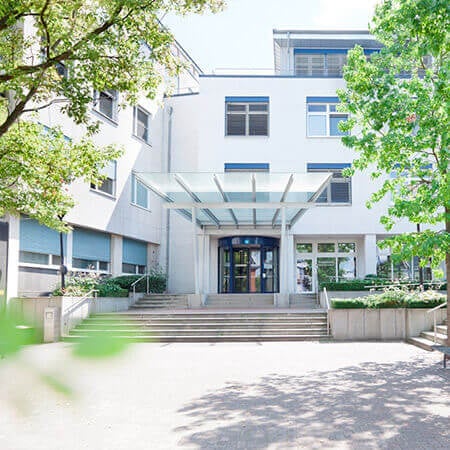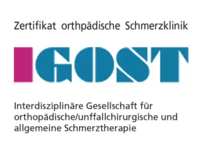Top Hospitals for Joint Replacement in Germany
Each hospital in this list meets Booking Health’s strict international standards: at least 250 surgeries per year, ISO‑certified quality management, and documented survival outcomes. Our medical board then ranks the clinics by clinical expertise, technology, and patient‑satisfaction scores.

The DRK Hospital Berlin Westend is a modern medical facility with a rich historical heritage. It is an academic hospital of the Charite University Hospital Berlin, one of the most prestigious medical facilities in Europe and worldwide. The medical complex is part of the DRK Kliniken Berlin Group, which has a history spanning mor



Hip osteoarthritis (coxarthrosis) treatment with bilateral hip replacement (hip endoprosthesis)
Price from:
25474.92
Go to the program Hip osteoarthritis (coxarthrosis) treatment with hip replacement (hip endoprosthesis)
Price from:
18455.37
Go to the program Hip osteoarthritis (coxarthrosis) treatment with hip replacement (hip endoprosthesis)
Price from:
Go to the program
18552.74
13552.74 Bilateral total knee replacement
Price from:
31122.58
Go to the program Bilateral total knee replacement and rehabilitation
Price from:
34779.72
Go to the program Total knee replacement
Price from:
Go to the program
17128.06
14628.06 Bilateral hip replacement and rehabilitation
Price from:
33447.57
Go to the program Hip replacement and rehabilitation
Price from:
Go to the program
24113.83
19113.83 Total knee replacement with rehabilitation
Price from:
Go to the program
22820.62
19820.62 Femoral neck fracture treatment with hip replacement (hip endoprosthesis)
Price from:
Go to the program
17965.2
14965.2 Hip replacement for hip dysplasia
Price from:
Go to the program
16900.48
14900.48 
Founded in 2014, the HELIOS Clinic Krefeld is one of the most modern medical facilities in Germany today. A team of highly qualified specialists, innovative medical equipment and comfortable accommodation conditions – the clinic has everything to make the treatment run smoothly and efficiently. Having crossed the threshold
Hip osteoarthritis (coxarthrosis) treatment with hip replacement (hip endoprosthesis)
Price from:
19604.81
Go to the program Hip osteoarthritis (coxarthrosis) treatment with hip replacement (hip endoprosthesis)
Price from:
19621.52
Go to the program Total knee replacement
Price from:
19592.28
Go to the program Hip replacement and rehabilitation
Price from:
25583.5
Go to the program Femoral neck fracture treatment with hip replacement (hip endoprosthesis)
Price from:
15742.98
Go to the program Hip replacement for hip dysplasia
Price from:
15876.62
Go to the program Total elbow replacement for elbow arthritis
Price from:
17484.45
Go to the program Total shoulder joint replacement for shoulder arthritis
Price from:
19408.54
Go to the program 
The Hospital Neuwerk, which is in Moenchengladbach, has over 10 specialized operating departments. Located in the northern part of the city, the hospital has been a coordination center for the region for many years. The hospital has 310 comfortable beds for ist patients. Due to a wide range of medical services, the hospital offe







Hip osteoarthritis (coxarthrosis) treatment with hip replacement (hip endoprosthesis)
Price from:
18323.82
Go to the program Hip osteoarthritis (coxarthrosis) treatment with hip replacement (hip endoprosthesis)
Price from:
Go to the program
17284.36
14184.36 Total knee replacement
Price from:
Go to the program
17829.56
14829.56 Hip replacement and rehabilitation
Price from:
Go to the program
23752.83
20252.83 Total knee replacement with rehabilitation
Price from:
Go to the program
23632.85
20632.85 Femoral neck fracture treatment with hip replacement (hip endoprosthesis)
Price from:
Go to the program
17108.23
15108.23 Hip replacement for hip dysplasia
Price from:
Go to the program
16745.96
14745.96 

